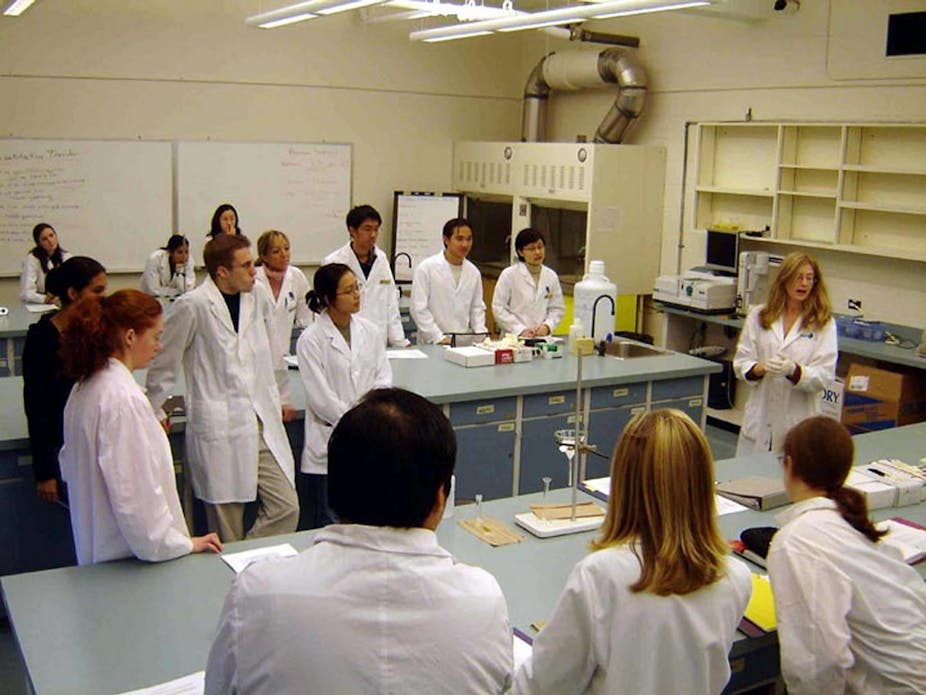The take-up of “enabling” science subjects such as mathematics, chemistry and physics has fallen behind the overall increase in science enrolments at universities over the past decade, according to a report released today.
Unhealthy Science?, which was commissioned by Australia’s Chief Scientist, Ian Chubb, claims that “Australia faces significant challenges to its scientific future, even though the rate of increase of university science enrolments are only marginally behind the pace of other disciplines”.
Report author Ian Dobson, who works for the Centre for Population & Urban Research at Monash University, studied enrolment data for all disciplines between 2002 and 2010.
His analysis showed that enrolments in science courses increased by 30% between 2002 and 2010, only just behind average growth rate of 33% across all courses. There were 18,000 more science students at the end of the decade than in 2002.
In summing up, the report said: “It is possible to conclude that the Natural and Physical Sciences held their ground in the 2000s.”
Nonetheless, Professor Chubb said the figures offered little relief for concerns about the future of science and technology in Australia.
“Having a growing pool of science graduates will ensure Australia can continue to compete on the international stage and develop scientific solutions to problems facing our nation such as food and water security, climate change and urban population growth,” Professor Chubb said.
Of concern was the slower growth in the number of science students taking the “enabling sciences”: chemistry, mathematics and physics. “These disciplines drive innovation and are critical to the national interest. Well over half of science bachelor’s degree students study them only in their first year.”
However, the report found that the composition of a science bachelor’s degree changed little over the decade, with biology being the main discipline (35.8%), followed by chemistry and mathematics (about 10% each) and physics and earth sciences (4-5%).
The slight dampening of growth in enabling sciences was caused by reduced interest among students taking bachelor’s degrees in other fields, some of whom also took courses in mathematics, chemistry and physics.
Dr Dobson said that “even if sciences are no longer in decline, one needs to ask whether zero-growth is good enough in a technology-based knowledge society. Typically one expects innovation to come out of science and technology rather than from say, management and commerce.”
A recent report by the Grattan Institute found that the proportion of students taking science at Australian universities has been stable over the past half century: in 1962, 16.4 per cent of university students studied science, rising slightly to 17.2 per cent in 2010.
The Program Director of Higher Education at the Grattan Institute, Andrew Norton, said that it was unhelpful to compare enrolments in science - or fields of study within science - with the past or with other disciplines. A more useful exercise was looking at whether demand for graduates in these fields was being met.
“Over the long run, the 2006 census indicates that they achieve typical levels of graduate employment, with about ¾ in professional or managerial jobs,” Mr Norton said. “So science is not an especially high-risk choice, but nor is it one likely to lead to above-average employment outcomes.”
“So far there is no evidence that we need a major boost in science enrolments [but] in any case we are getting just that - with a strong increase in applications for science courses flowing through to increased numbers of undergraduate places.”
A report commissioned by Professor Chubb into science studies at Year 12 level, released in December, found that enrolments had collapsed by half in just 20 years. But the report attracted controversy when it was claimed that data had been aggregated incorrectly, presenting an exaggerated impression of decline.
That report, together with today’s publication, are among three commissioned by the Chief Scientist to inform his advice in his own Health of Australian Science Report, due for release next month.

